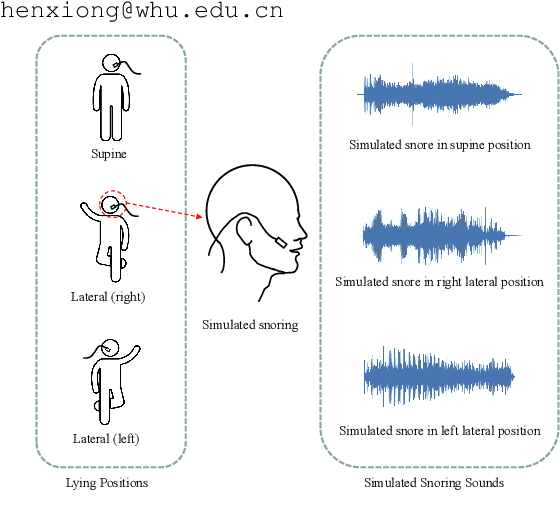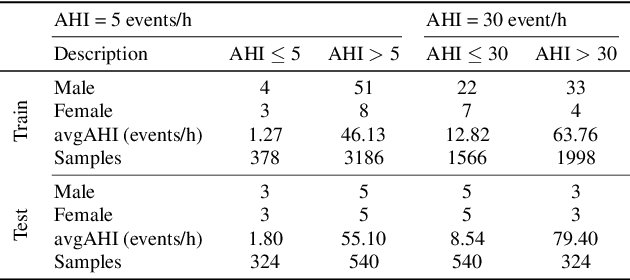Xiuping Yang
SimuSOE: A Simulated Snoring Dataset for Obstructive Sleep Apnea-Hypopnea Syndrome Evaluation during Wakefulness
Jul 10, 2024



Abstract:Obstructive Sleep Apnea-Hypopnea Syndrome (OSAHS) is a prevalent chronic breathing disorder caused by upper airway obstruction. Previous studies advanced OSAHS evaluation through machine learning-based systems trained on sleep snoring or speech signal datasets. However, constructing datasets for training a precise and rapid OSAHS evaluation system poses a challenge, since 1) it is time-consuming to collect sleep snores and 2) the speech signal is limited in reflecting upper airway obstruction. In this paper, we propose a new snoring dataset for OSAHS evaluation, named SimuSOE, in which a novel and time-effective snoring collection method is introduced for tackling the above problems. In particular, we adopt simulated snoring which is a type of snore intentionally emitted by patients to replace natural snoring. Experimental results indicate that the simulated snoring signal during wakefulness can serve as an effective feature in OSAHS preliminary screening.
A Snoring Sound Dataset for Body Position Recognition: Collection, Annotation, and Analysis
Jul 25, 2023Abstract:Obstructive Sleep Apnea-Hypopnea Syndrome (OSAHS) is a chronic breathing disorder caused by a blockage in the upper airways. Snoring is a prominent symptom of OSAHS, and previous studies have attempted to identify the obstruction site of the upper airways by snoring sounds. Despite some progress, the classification of the obstruction site remains challenging in real-world clinical settings due to the influence of sleep body position on upper airways. To address this challenge, this paper proposes a snore-based sleep body position recognition dataset (SSBPR) consisting of 7570 snoring recordings, which comprises six distinct labels for sleep body position: supine, supine but left lateral head, supine but right lateral head, left-side lying, right-side lying and prone. Experimental results show that snoring sounds exhibit certain acoustic features that enable their effective utilization for identifying body posture during sleep in real-world scenarios.
 Add to Chrome
Add to Chrome Add to Firefox
Add to Firefox Add to Edge
Add to Edge